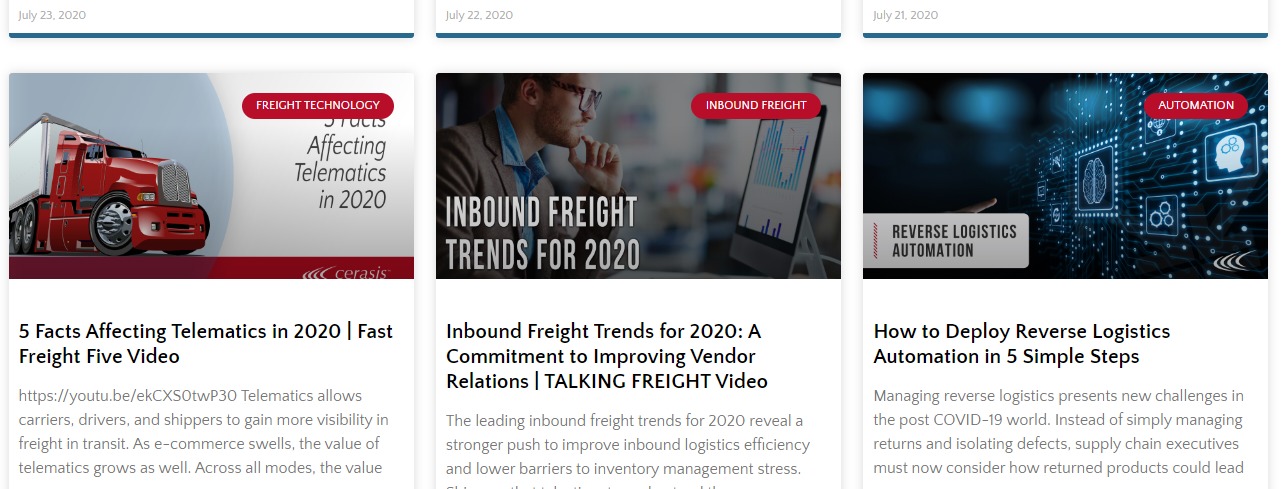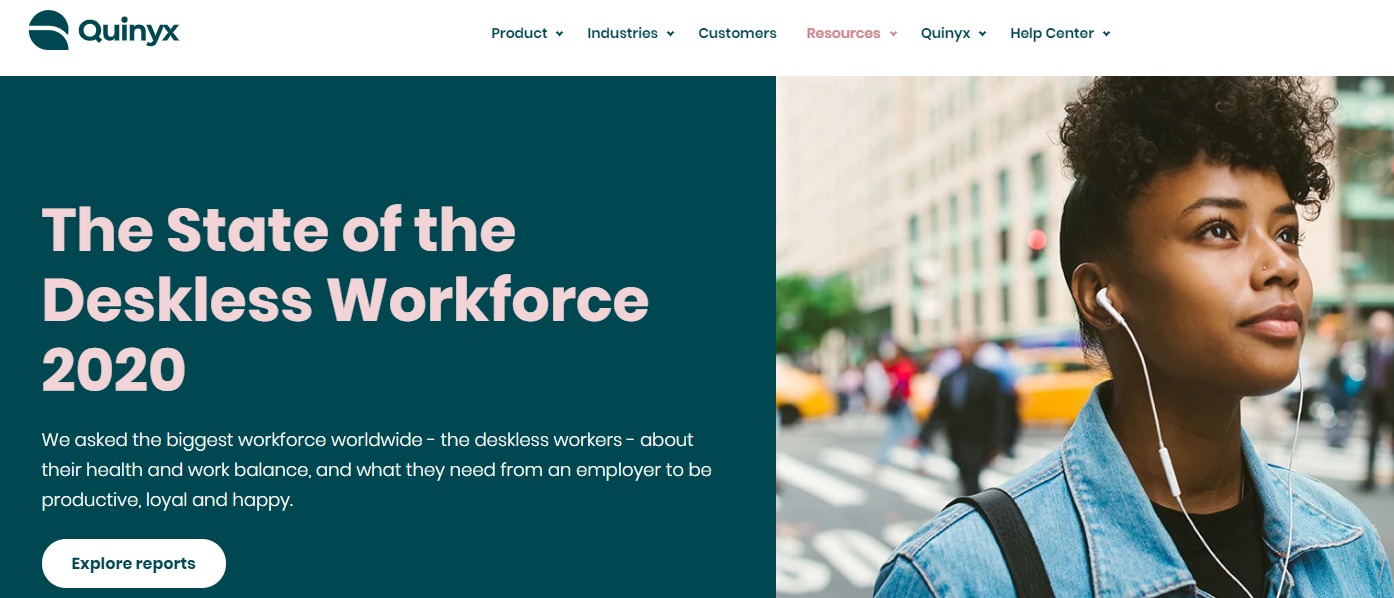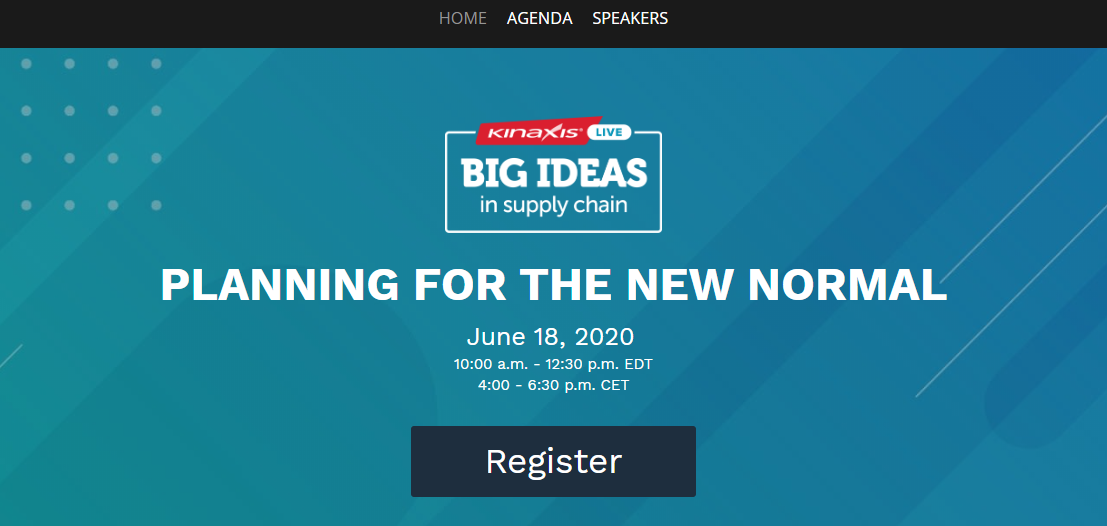
by Fronetics | Aug 5, 2024 | Blog
Nearly ubiquitous in every day business conversation, artificial intelligence (AI) now touches virtually every market sector. However, its impact on supply chain management has been particularly interesting to watch.
AI isn’t just changing supply chain management; it’s revolutionizing it. Nearly three-quarters of supply chain companies reported using AI in some form in a 2024 McKinsey survey. From improved forecasting and optimization to enhanced risk management and sustainability, AI is helping businesses create more efficient, resilient, and responsive supply chains.
The AI Revolution in Supply Chain Management
Artificial intelligence isn’t just a buzzword in supply chain management; it’s a game-changer. It’s reshaping how businesses manage their supply chains. What is AI doing to transform supply chain management?
1. Unparalleled Demand Forecasting
One of the most significant advantages AI brings to supply chain management is its ability to predict demand with unprecedented accuracy. By analyzing vast amounts of historical data, market trends, and external factors, AI algorithms can forecast demand patterns more precisely than ever before. This enhanced forecasting ability helps companies:
- Optimize inventory levels
- Reduce waste
- Improve customer satisfaction by ensuring product availability
2. Intelligent Inventory Management
AI doesn’t stop at predicting demand; it also revolutionizes inventory management. Machine learning algorithms can:
- Continuously adjust inventory levels based on real-time data
- Optimize stock levels across multiple locations
- Reduce carrying costs while minimizing stockouts
This level of intelligent inventory management leads to significant cost savings and improved efficiency.
3. Predictive Maintenance: Reducing Downtime
In supply chain operations, equipment downtime can be costly. AI-powered predictive maintenance is changing this landscape by:
- Analyzing sensor data to predict when equipment is likely to fail
- Scheduling maintenance before breakdowns occur
- Extending asset lifespans through timely interventions
The result? Reduced downtime, lower maintenance costs, and improved operational reliability.
4. Route Optimization: Enhancing Logistics Efficiency
For businesses involved in transportation and logistics, AI offers powerful route optimization capabilities. AI algorithms can:
- Calculate the most efficient routes in real-time
- Factor in variables like traffic, weather, and fuel costs
- Reduce transportation costs and improve delivery times
This not only saves money but also enhances customer satisfaction through faster and more reliable deliveries.
5. Automated Warehousing: The Future of Fulfillment
AI is transforming warehouse operations through automation. AI-powered robots and systems can:
- Streamline picking and packing processes
- Improve order fulfillment speed and accuracy
- Reduce labor costs and human error
These advancements are particularly crucial in the era of e-commerce and same-day delivery expectations.
6. Proactive Risk Management
Supply chain disruptions can have severe consequences. AI helps businesses stay ahead of potential issues by:
- Analyzing various data sources to identify potential risks
- Providing early warnings about supplier issues, geopolitical events, or natural disasters
- Enabling proactive risk mitigation strategies
This proactive approach enhances supply chain resilience and business continuity.
7. Dynamic Pricing Strategies
AI algorithms can adjust pricing in real-time based on various factors, including:
- Current demand and supply levels
- Competitor pricing
- Market conditions
This dynamic pricing capability helps businesses maximize revenue and maintain competitiveness in volatile markets.
8. Enhanced Quality Control
Quality issues can be costly and damaging to a brand’s reputation. AI, particularly computer vision and machine learning, can:
- Detect product defects more quickly and accurately than human inspectors
- Identify patterns that may lead to quality issues
- Improve overall product quality and reduce recalls
9. End-to-End Supply Chain Visibility
One of the most valuable contributions of AI to supply chain management is its ability to provide comprehensive visibility. AI can:
- Integrate data from various sources across the supply chain
- Provide real-time insights into every aspect of operations
- Enable better-informed decision-making at all levels
This end-to-end visibility is crucial for identifying inefficiencies and optimizing the entire supply chain.
10. Driving Sustainability in Supply Chains
As businesses focus more on sustainability, AI is playing a crucial role. It can:
- Optimize operations to reduce waste and energy consumption
- Identify opportunities for more sustainable practices
- Help businesses meet their environmental goals while maintaining efficiency
The Future of AI in Supply Chain Management
The potential of AI in supply chain management is vast and still largely untapped. As AI technologies continue to evolve, we can expect even more innovative applications that will further transform the industry. The COVID-19 pandemic highlighted the need for more agile and robust supply chains, accelerating interest in AI solutions. Businesses that embrace AI in their supply chain operations are likely to gain a significant competitive advantage in the years to come.
In fact, as we move forward, the integration of AI in supply chain management will likely become not just an advantage, but a necessity for businesses looking to thrive in an increasingly complex and competitive global marketplace.

by Fronetics | Jul 23, 2020 | Blog, Content Marketing, Covid-19, Marketing, Strategy
The benefits of a B2B blog are too important to overlook. Plus: Three companies that excel at content creation.
If your company blog has gone the way of the bears in winter, there is good reason to bring it back to life. That stale page on your website is more important than may realize. When months and even years go by without a single update, you’re missing out on company blog benefits.
Let’s cut straight to the stats:
- 70% of respondents in a Databox survey said SEO is better than pay-per-click (PPC) advertising for generating sales. (Can you guess what a leading driver of website SEO is?)
- Blogs are among the top 3 tools used in content strategies (HubSpot 2020).
- 51% of companies say updating old content has proven to be the most efficient tactic implemented (SEMrush, 2019). (See our post on reworking content for SEO here.)
- 67% of companies use organic traffic to measure content success (SEMrush, 2019). (You guessed it: A blog is a key tool in boosting organic search traffic.)
- 72% of online marketers say content creation is their most effective SEO tactic.
- Companies with blogs generate 97% more inbound links and 434% more indexed pages than those without.
In other words, a company blog brings benefits beyond just being a source of information, a tool to communicate with prospects, and to build brand. Despite new technologies, text will — as HubSpot points out in its 2020 State of Marketing Report — always be the foundation of search. And no place allows you to add descriptive text for improved search rankings as much as a company blog.
Not seeing company blog benefits? Here are 4 common pitfalls.
But as the significant number of hibernating company blogs shows, the pitfalls tend to come in spades. If your B2B blog is currently on snooze, let us guess the reason falls into one of the following categories:
- Unforeseen events: The most recent example is, of course, the Covid-19 pandemic. Faced with massive upheaval, supply chain companies, in particular, had to reshuffle resources. Although a crisis could be the time to step up communication and position the company as a leader, some blogs went dark after releasing a statement on the pandemic and its impact on the business.
- Unrealistic expectations: More than a few B2B blogs have run out of steam when immediate results fail to materialize. The disappointment tends to stem from unrealistic expectations. As much as everyone wants that first blog post to bring in a bucketload of leads, content marketing takes time to build momentum; but, done right, it is designed to turn into a tidal wave of improved search authority. Let patience rule and you will be rewarded.
- Lack of resources: To stand out in a crowd of tough competitors is not accomplished in an afternoon. Managing a successful company blog takes time. Other than outsourcing, there really is no way around it. If the blog is run on the fly or is low on the list of priorities, the results will suffer along with the motivation to keep going.
- Lack of strategy: Publishing for the sake of publishing will get you nowhere. Who are you writing for? What keywords are they using? How do you evaluate performance? Even well-written content can miss the target if it is not tailored around the audience you want to reach.
- Lackluster content: Although we always stress the need for consistency and keyword optimization when it comes to blog content, there is yet another aspect that is just as important — quality. A company blog that does not benefit your target audience will not benefit you. The most successful B2B blogs combine SEO best practices with useful, high-quality content.
B2B blogging done right: 3 examples of great blogs
For inspiration, it always helps to look at the organizations that get it right. And there are many to choose from. Take a look at three that have realized company blog benefits with engaging and purposeful content. Although conceptually different, the visions of these blogs align with the goals of each company, whether it’s generating leads with persuasive analytics or carving out a niche in social responsibility.
1. Cerasis: Market insights

The transportation management company was one of the early adopters of B2B blogging — and the results have been impressive. And Cerasis is not letting up. The company has published 15 blog posts in July alone, a pace few can — or don’t necessarily need to — match.
2. General Electric: Global vision

A multibillion-dollar corporation has the benefit of ample resources — and GE is putting them to good use. General Electric Reports intelligently humanizes the company with a stream of stories on the impact of GE products on global progress and employee spotlights that tie into current events.
3. Comscore: Analytics first

A look at Comscore’s blog leaves no doubt about its specialty: the collection and analysis of internet data. Comscore draws upon its vast resources to create content that is found nowhere else. The ability to showcase such detailed expertise is sure to sway a target audience looking to leverage customer behavior online.
Time to crawl out
The impact of an effective B2B blog can be huge. It requires research and vision to get started, persistence to keep it up, and analysis to evaluate the performance. In the end, the benefits of a company blog contribute to the health of your entire organization.
How about waking that bear up again?
Read more:
Key step to moving beyond survival mode: Revising B2B buyer personas
Trade show cancellations call for contingency plans (It’s urgent)

by Fronetics | Jul 19, 2020 | Blog, Current Events, Supply Chain
As the popularity of podcasts grows, DC Velocity premieres a new supply chain podcast — Logistics Matters.
Our blog posts on supply chain podcasts consistently get a lot of views. Now, we can share news of another addition to the growing lineup of listen-worthy talks.
Logistics Matters With DC Velocity is a brand-new supply chain podcast designed to help logistics and supply chain professionals keep up with the most recent developments in this fast-changing industry. Considering the recent global disruption, there’s hardly a better time to add this insightful commentary to your list of podcasts.
At the mic, we find the editors of DC Velocity magazine: Editorial Director David Maloney, Senior News Editor Ben Ames, and Senior Editor Victoria Kickham. Every Friday, they post a new episode tackling the latest news and trends that supply chain professionals should understand to make informed decisions and stay abreast of the competition.
Logistics Matters With DC Velocity also invites industry experts to share their take on the issues that are driving conversations in distribution center management, freight transportation, material handling, and more.
Timely topics kick off new supply chain podcast
And this new supply chain podcast is off to a strong start with a range of timely topics. Take a look:
- What to watch out for in the United States-Mexico-Canada agreement — with David Henry of GlobalTranz.
- Keeping material handling equipment safe and sanitized — with Ken Raycroft of Briggs Equipment.
- Racism faced by Black delivery drivers — with Dr. Terry Esper, associate professor of logistics at the Ohio State University’s Fisher College of Business.
- Investments in logistics technology companies amid the pandemic.
- National Forklift Safety Day — with Brian Feehan of the Industrial Truck Association.
- IT infrastructure problems revealed by Covid-19.
- Martin McVicar of Combilift on how the company has adjusted its manufacturing operations and customer contacts in light of the pandemic.
- How layoffs are disproportionately affecting the logistics sector.
- How truck drivers are being shown a little love in the form of higher pay.
Easy listening wherever you are
Just like podcasts in general — they now number a staggering 850,000 — supply chain podcasts have grown in popularity in recent years, spurred by increased smartphone use and the ease they let you absorb new information. Some, like Talking Logistics, founded in 2015, and the Inbound Logistics Podcast, founded in 2016, are veterans in the group. Others, like The Digital Supply Chain podcast, premiered last year. But, clearly, there’s even more to say.
Logistics Matters With DC Velocity is available on Apple Podcasts, Spotify, Stitcher, TuneIn, Google Podcasts, iHeart Radio, and many other platforms, as well as at dcvelocity.com/podcasts. DC Velocity’s new supply chain podcast is produced by AGiLE Business Media, a leading publisher of business content for logistics, material handling, and supply chain executives.
It has never been easier to stay on top of the world of supply chain trends and news.
Happy listening.
Read more:

by Fronetics | Jul 14, 2020 | Blog, Covid-19, Marketing, SEO
Updated 1/21/25
Revitalizing Your Blog Archive: Modern SEO Strategies for 2025
Your company blog remains a valuable asset for search visibility, but the rules have evolved. Here’s how to breathe new life into your old blog posts using current SEO best practices — without overwhelming your team.
Why Update Old Content?
Search engines, particularly Google, have become increasingly sophisticated in evaluating content quality and relevance. While freshness remains important, it’s now just one factor among many. Google’s helpful content system and AI-driven algorithms prioritize comprehensive, authoritative content that genuinely serves user intent.
Our own data supports this evolution: a 2018 post about corporate social responsibility continues to perform well not just because it’s regularly updated, but because it thoroughly addresses the topic from multiple angles, matching the depth that today’s search engines expect.
The Modern Benefits of Blog Post Updates
Updating old blog posts delivers several key advantages in today’s search landscape:
- It signals to search engines that your site is actively maintained and authoritative in your field.
- It allows you to align content with current search intent patterns and semantic search capabilities.
- It helps maintain E-E-A-T (Experience, Expertise, Authoritativeness, and Trustworthiness).
- It provides opportunities to optimize for voice search and featured snippets.
- It enables you to incorporate new media formats that modern search engines favor.
Identifying High-Potential Posts for Updates
Rather than randomly updating old content, focus on posts with these characteristics:
Strong Existing Performance Signals
- Posts that already rank on page 2-3 for valuable keywords (these often have untapped potential)
- Content with high dwell time but low conversion rates
- Pages that earn consistent backlinks despite their age
- Posts that generate significant social engagement
Strategic Value Indicators
- Topics that align with current business priorities
- Content that addresses evergreen industry challenges
- Posts that target high-commercial-intent keywords
- Pages that compete with outdated competitor content
Modern SEO Update Strategies
1. Optimize for Search Intent
- Use tools like Google Search Console‘s search queries report to understand how users actually find your content
- Analyze the “People Also Ask” boxes for related topics
- Structure content to directly answer common user questions
- Consider adding FAQ schema markup for enhanced SERP visibility
2. Enhance Content Depth and Authority
- Expand sections that address key user pain points
- Include expert quotes and current industry statistics
- Add real-world examples and case studies
- Lnk to authoritative sources using targeted anchor text
3. Improve Technical SEO Elements
- Implement proper header hierarchy (H1, H2, H3)
- Optimize for Core Web Vitals (loading speed, interactivity, visual stability)
- Add structured data where appropriate (Article, HowTo, FAQ schemas)
- Ensure mobile optimization meets current standards
4. Enhance Media and Interactivity
- Add high-quality, original images with descriptive alt text
- Include interactive elements like calculators or assessment tools where relevant
- Embed relevant videos with proper schema markup
- Consider adding infographics or data visualizations
5. Internal Linking Strategy
- Create topic clusters linking related content
- Update anchor text to reflect current keyword targeting
- Remove links to outdated or redirected pages
- Add links to newer, relevant content
6. User Experience Optimization
- Break up long paragraphs for better readability
- Add table of contents for longer posts
- Include clear calls-to-action
- Optimize for featured snippet opportunities
7. Content Consolidation
- Identify and merge similar posts to create comprehensive resources
- Implement proper redirects for consolidated content
- Update internal links to point to new consolidated pages
- Maintain URL structure of the strongest performing page
Technical Implementation Best Practices to Update Old Blog Posts for SEO
When updating posts:
- Maintain the original URL to preserve link equity
- Update the “last modified” date in your CMS and XML sitemap
- Consider adding a “Last Updated” note for transparency
- Use proper schema markup to indicate the last update date
- Monitor Core Web Vitals before and after updates
Measuring Success
Track these metrics to evaluate the impact of your updates:
- Organic search traffic changes
- Featured snippet acquisition
- Position tracking for target keywords
- User engagement metrics (time on page, bounce rate)
- Conversion rates
- Core Web Vitals scores
The Bottom Line
While it’s valuable to update old blog posts for SEO, success in 2025 requires a more nuanced approach that considers user intent, content quality, and technical excellence. Focus on creating comprehensive, authoritative content that serves your audience’s needs while adhering to modern technical SEO best practices.
Regular content audits and updates should be an integral part of your SEO strategy, but remember that quality trumps quantity. Prioritize updates that add genuine value for your users and align with current search engine capabilities.
Read more:

by Fronetics | Jun 16, 2020 | Blog, Covid-19, Marketing, Strategy, Supply Chain
We conducted a quick audit of supply chain company pages — and found these examples of effective marketing strategies.
The country is step by step trying to return to a new normal, but uncertainty continues to throw a wrench into full supply chain recovery. What are some examples of effective marketing strategies during such a disruptive time? When a Zappos order takes two weeks to arrive rather than the usual overnight, even end customers cannot help but notice the impact of the global pandemic is far from over.
Group News Editor Jeff Berman reflects on the challenges in Logistics Management:
“We have emerged from the abyss, in the past, but things felt different, in the sense that perhaps there was more of a tangible or definitive endgame or objective that would bring some type of closure to these issues. But, unfortunately, as things relate to COVID-19 and the ongoing civil unrest, things remain far more loosely defined, or simply undefined or uncertain.”
Despite the disruption, organizations that can emerge as beacons of knowledge and stability can have a distinct advantage over the competition. While some supply chain companies have chosen — deliberately or not — to leave out references to the disruption in their external communication and on their websites, others have created elaborate resources directed at current customers and prospects.
So, what marketing strategies are others pursuing? We conducted a quick audit of leading industry publications and company pages to see who have decided to actively engage their audience and how they have gone about doing it. As you will see, returning features of these examples of effective marketing strategies during Covid-19 is the:
- Reframing of the sales language to suit the current environment
- Focus on being a source of help
- Effort to initiate meaningful conversations with prospects
4 examples of effective marketing strategies to take your company through Covid-19 uncertainty
Descartes — comprehensive resource page instills confidence

Descartes has created a text-book resource page. The multinational technology company leaves no question unanswered, skillfully weaving thought leadership resources and customer testimonials with gratitude to “logistics and supply chain heroes” and a running log of press mentions.
The product pitch has been reframed to answer the needs of the target audience. Descartes’ cloud-based logistics and supply chain solutions are not just good for any challenge but specifically brings the “flexibility needed to efficiently respond to challenges related to the global pandemic.”
The rest of the page is built to reinforce that point. Three calls-to-action urge readers to:
- Join an upcoming webinar on finding alternative supply sources in a disruptive time
- Speak to a Descartes expert on how to mitigate operational challenges
- Connect with a Domain expert
In addition, readers find as many as 11 whitepapers or Covid-19 Action Guides. Topics cover a range of challenges, from pivoting to no-contact deliveries and assessing the impact on supply sources with global trade data to dealing with import and export compliance issues. Descartes has also, in a short amount of time, compiled a list of case studies that serve as real-life examples of how the company has helped customers mitigate the impact of Covid-19.
Takeaway: The page instills confidence and enforces the impression this company is ready to lead customers through volatile times.
Quinyx — timely study starts relevant conversations

Quinyx, a global cloud-based, workforce management SaaS provider, astutely made the company part of relevant conversations by producing a study, The State of the Deskless Workforce, at just the right time. The study surveyed 12,000 deskless workers in a range of industries, including logistics and transportation, in March and, again, in April to understand the impact of the global pandemic.
Among the findings that generated a stir: 30% of logistics workers think it is a fireable offense to take more than one consecutive sick day; and nearly 20% of logistics professionals came into work sick during the Covid-19 outbreak.
The timely release of the study managed to both subtly promote the Quinyx solutions and highlight the newsworthy issue of workplace flexibility. A related blog post on the study concludes: “If 2020 has a silver lining, it comes in how it’s forcing businesses to react, respond and embrace technology to safeguard their futures.”
Takeaway: The study helps position Quinyx as a hands-on partner tuned into the needs of customers in a rapidly evolving work environment.
Kinaxis — virtual events fill trade show void

On May 29, Kinaxis issued a press release: The company was launching Kinaxis Live, a series of virtual conferences on the theme, “Planning for the New Normal.” In the release, Kinaxis, steered clear of the Wikipedia description of the company (“a supply chain management and sales and operation planning software company”), opting instead for action-driven language that captures the aim of its target audience (“the authority in driving agility for fast, confident decision-making in an unpredictable world”).
The events bring together Kinaxis experts as well as supply chain practitioners from other companies, including Merck, Flex, ON Semiconductor, Lippert Components, and Konica Minolta, and promise to discuss:
- Lessons learned on managing through COVID-19 and the future of supply chain planning
- Insights on how to prepare for the rebound and long-term impacts across industries
- Tips on how to build resiliency and agility into your integrated business and supply chain planning by leveraging AI, human intelligence, and concurrent planning
Takeaway: By bringing the conversation online, Kinaxis can reach prospects who missed out on the opportunity to connect during one of the now canceled or postponed trade shows. The events also help establish Kinaxis as a trusted and knowledgeable resource with a large ecosystem of high-profile partners.
Kibo — approachable resource center builds competitive edge

The rise of online shopping since the arrival of Covid-19 has — naturally — triggered interest in cloud-based technology. And Kibo has aptly seized the opportunity to raise the profile of its ecommerce platform with a clean-cut Covid-19 resource page.
Aiming to provide “tactical and empowering content to lean on,” Kibo has created a range of resources tightly focused on showcasing industry expertise and answering customer questions. Visitors can access webinars, a whitepaper, and blog posts on everything from personalizing your order management strategy in the Covid-19 era to setting up touchless pickup.
Takeaway: The conversational tone of the page strikes a balance between promoting the company product and sounding genuinely interested in helping clients navigate the Covid-19 crisis. In the intensely competitive market for ecommerce platforms, the page can set Kibo apart.
Many companies are still learning how to best conduct marketing in the midst of a global crisis. Examining examples of effective marketing strategies can generate ideas and inspire adjustments that help your organization rise above the pack.

Read more:
The case for outsourcing content marketing at a time of disruption
Supply chain marketing during Covid-19, the risk of cutting back
Covid-19 messaging strategy for supply chain companies: Getting the basics right













